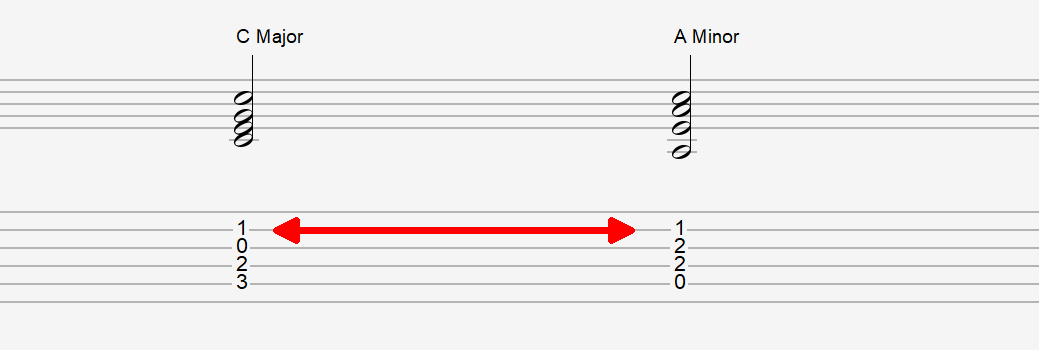How To Get Faster At Guitar Chords Using 3 Simple & Easy-To-Apply Methods
Being able to play guitar chords fast and smooth is one of the coolest abilities to have on guitar. It gives you the power to quickly play something that sounds musical and impressive without needing to play any scale patterns or use complex technique.
Knowing how to do this is critical for guitar players regardless of their current skill level.
Ready to play the cleanest and smoothest guitar chord changes ever?
Good.
Get started right now by applying these three practice principles into your guitar playing:
Make Your Finger Movement Incredibly Efficient
One of the easiest ways to get bogged down while playing guitar chords is using inefficient movement while moving from one chord to the next.
This means using fingerings that re-position your fingers unnecessarily or moving your fingers further away from the fretboard than needed.
Once you make your movement efficient, playing chord changes becomes much easier and smoother than ever before.
Use these tips to develop incredibly efficient movement from one chord to the next:

Practice switching by only moving the fingers that need to be moved. In other words, do not take your first finger off the first fret.
As you do this, focus on keeping your fingers close to the strings so you don’t waste movement or energy by pulling your fingers up and away from the fretboard.
Once you’ve got the hang of this, try this:
Practice moving your hand completely up and off the fretboard, then fret the next chord. This makes transferring from chord to chord like normal feel easier.
Make It Easier To Play Chords At First Using Arpeggios
Playing guitar chords faster feels like a breeze when you give yourself more time to think while changing fingerings or moving to different positions on the fretboard.
A great way to do this is to arpeggiate the chords you are playing.
This gives you a ton of time to think about what your fingers will do next, so moving to the next chord becomes much more seamless.
Additionally, you give yourself more time to process notes by repeating notes of the arpeggio several times.
For example:

Next, arpeggiate the chord rather than playing all notes at once as shown in the first arpeggio of the tab.
Now try the next (ascending) arpeggio. This gives you a different feel by starting from the lowest note first instead of the highest.
The next arpeggio involves picking the first note twice before begin the arpeggio itself. This gives you even more time to prepare your finger to play the chord.
The last part of the tab only plays the first notes twice before playing the chord.
Try all these approaches out in different combinations while learning a new chord to help yourself transition into playing the full chord without hesitation.
Make Your Chord Progressions As Musical As Possible
Playing the same chords over and over can become a bit dull. This makes it harder to feel motivated to practice and get better.
Solution:
Make your guitar chord practice as musical as possible.
Instead of just practicing chord patterns over and over, look for ways to use the chords for musical expression.
What are some ways to do this?
Here’s just a short list:
·
Use the chords you are learning to write music.
Writing music with a strict rhythm forces
you to stay in time and gives you incentive to make the song feel smooth by
perfecting the transition from one chord to the next.
·
Improvise with chords underneath the solos of
your favorite songs.
For example: If a song you like has a
guitar solo, learn what the chords are beneath it and improvise your own
rhythms.
·
Combine chords with individual notes (from
scales or arpeggios).
This is a bit more advanced, but combining chords with a few notes or more of a scale sounds awesome and helps you integrate different aspects of your guitar playing together. This helps you play chords faster on guitar while adding a new dimension to your skill set.
Now you have some great ideas for smoothing out your chord transitions and playing chords with hesitation.
Don’t just practice them all in isolation though! Combine the different approaches you learned together to integrate them flawlessly into your guitar playing style.
